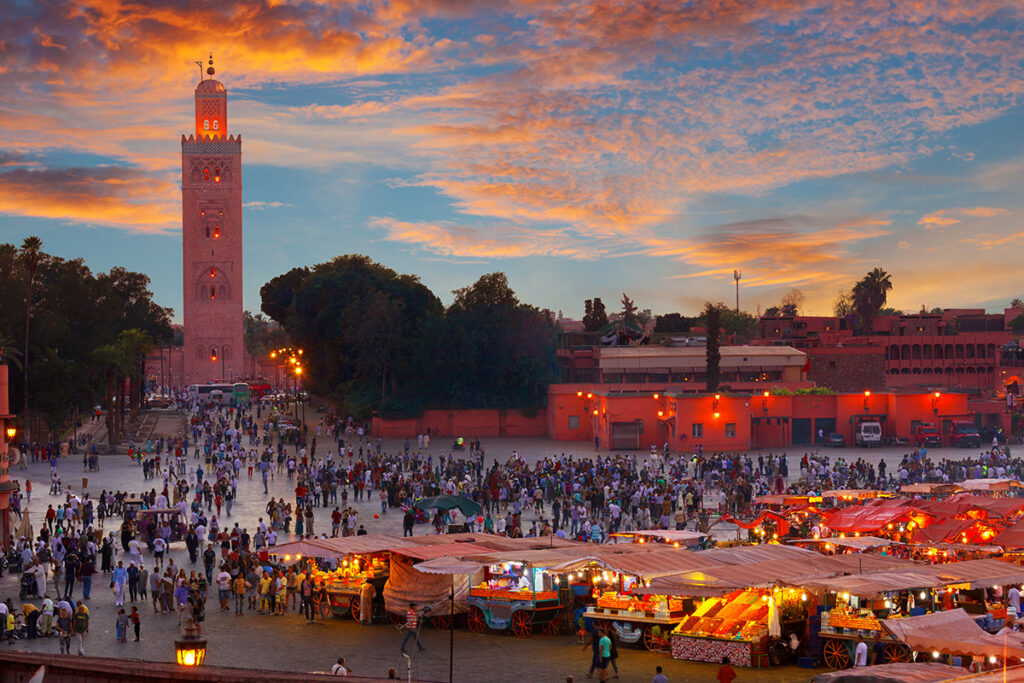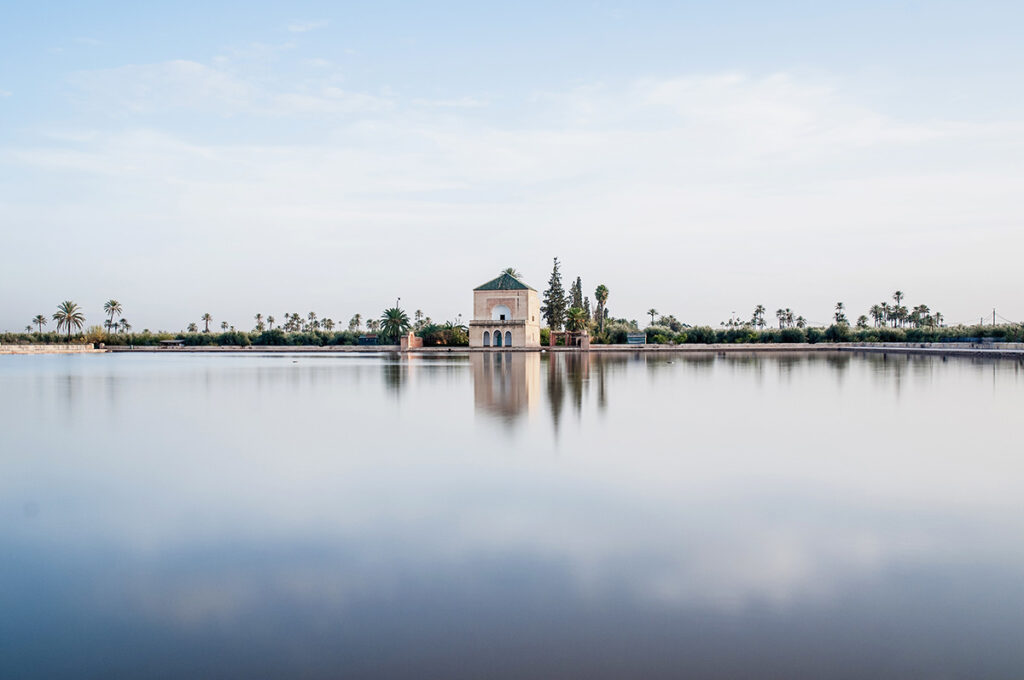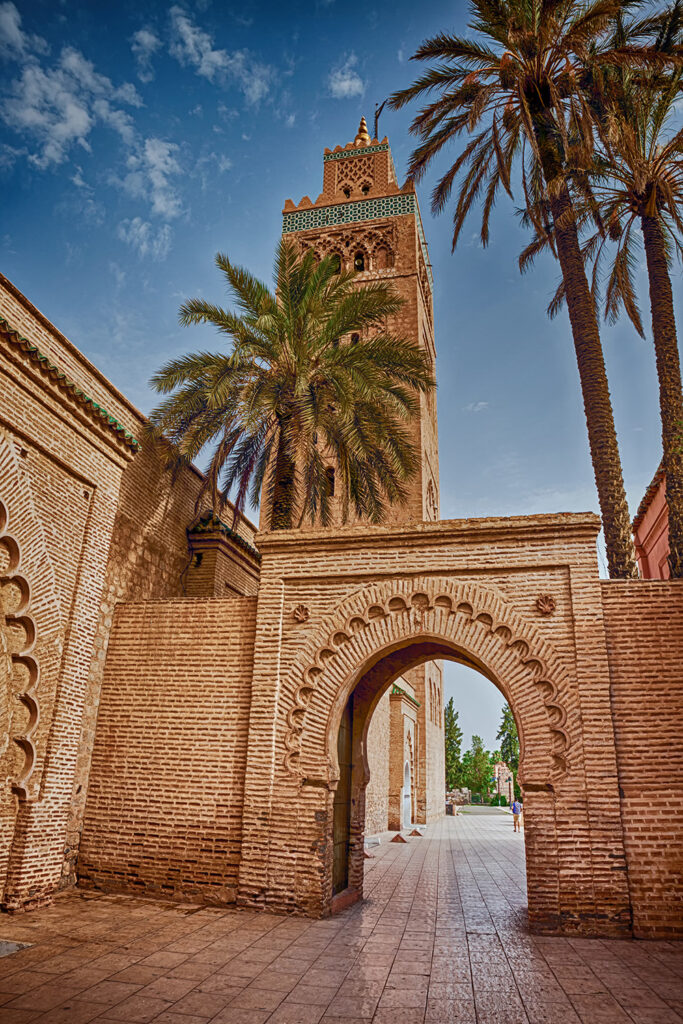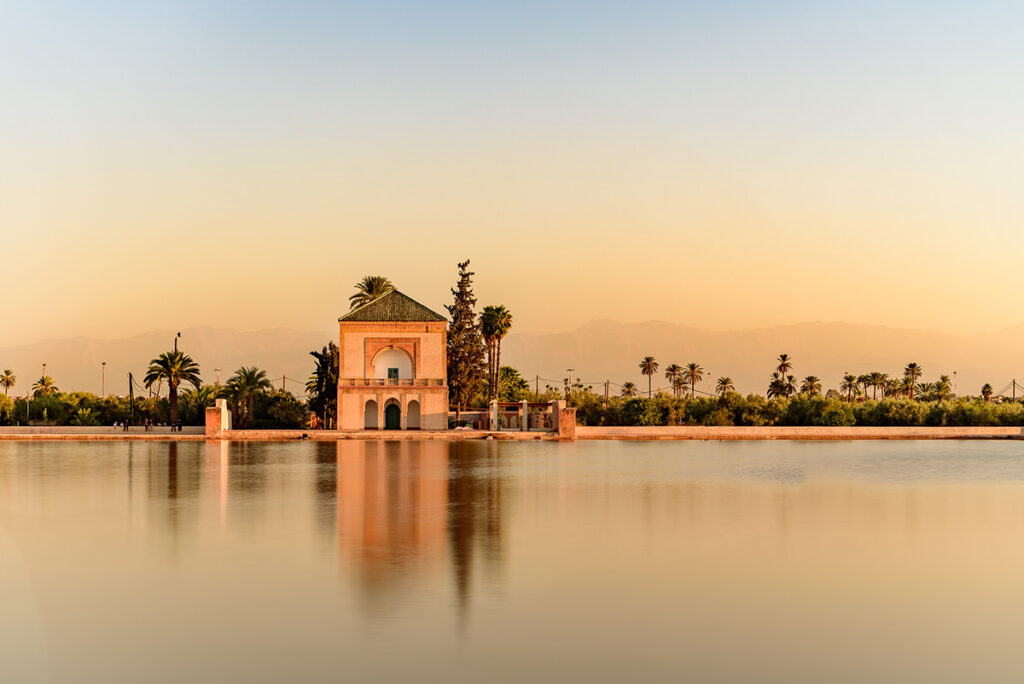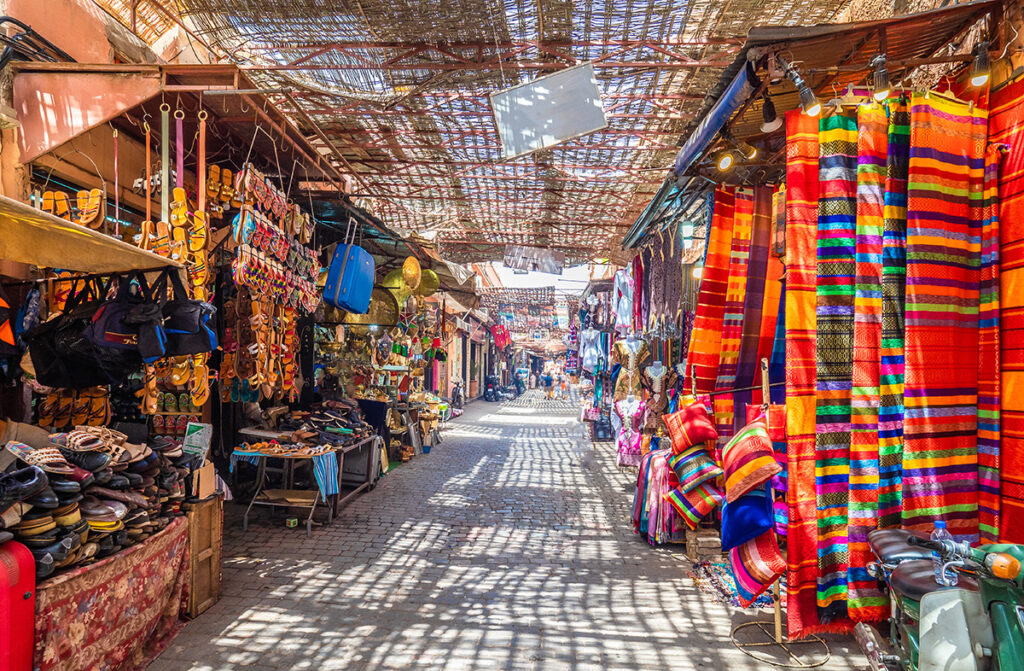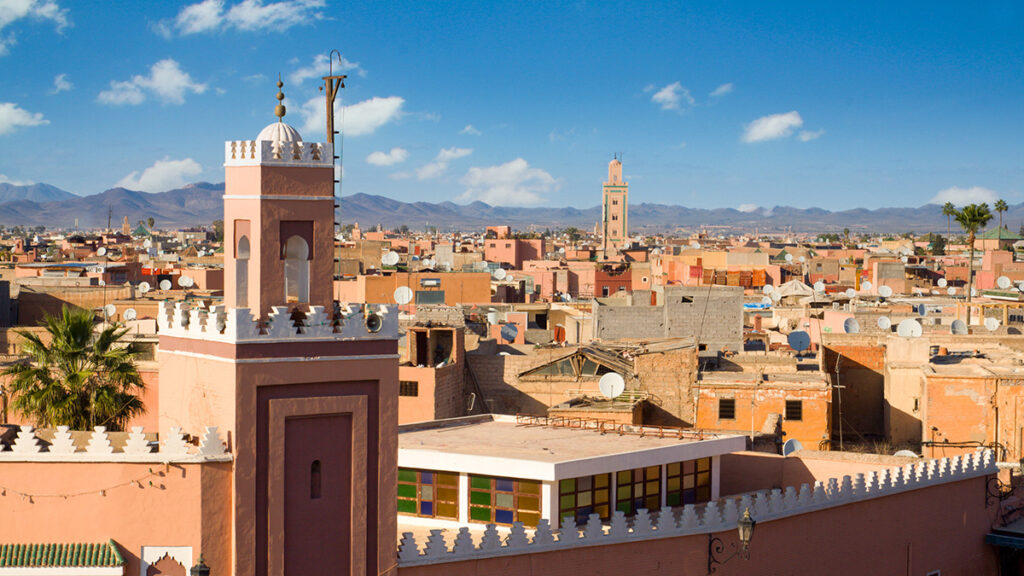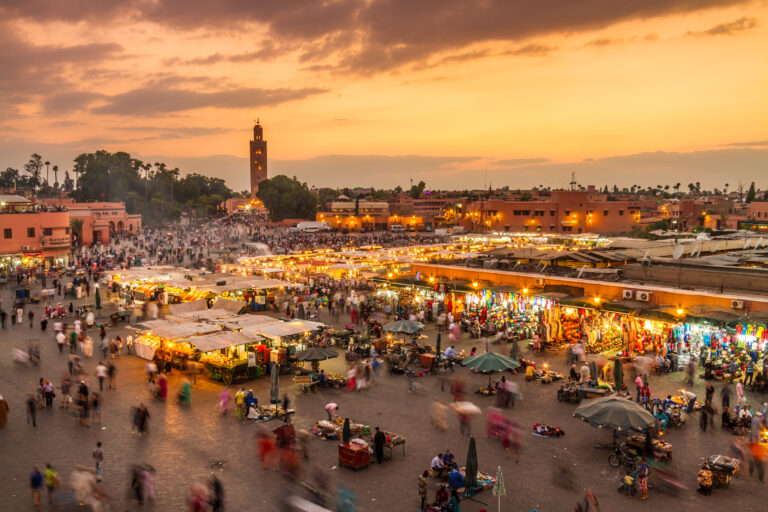Marrakesh, an exotic and trendy city
Marrakesh can be proud to bear the name of a country, Morocco, of which it was once the capital and which at that time was called Marrakesh (literally “Amur Akouch” which means “God’s land” in Tamazight). It was founded in 1071 by the Almoravid Berber Sultan Youssef Ben Tachfine, then fell under the yoke of the Almohads in 1147. The dynasties succeeded one another, Merinides, Saadians then Alaouites from the end of the 17th century to the present day.
Marrakesh is without a doubt the most famous city in the Kingdom. Since the beginning of the century, the city has attracted major historical figures, Churchill in the first place who used to stay at the Hotel la Mamounia before the war and who could be seen in the hallways carrying his easel. Since then, many Heads of State, French and African in particular, have stayed there, usually in winter or spring. Yves Saint Laurent, the famous French couturier, acquired a magnificent house there in the mid-60s; in the 1980s, he and Pierre Bergé bought the Jardin Majorelle, named after the Orientalist painter (we owe him the famous Bleu Majorelle) who had set up his studio there. Nearby is now the Yves Saint Laurent museum, an architectural jewel celebrating the duality between curves and straight lines.
As the tourist capital of Morocco, it is the most visited city of the Kingdom. Tourists, but also dwellers of Casablanca and Rabat love going to Marrakesh, some to sunbathe and play golf, others to enjoy the surrounding nature, or simply to taste the gentle way of life of the city. Its medina, although a victim of its own success which has reinforced the phenomenon of gentrification, remains authentic, where everyone lives in their own way; the storytellers, medicinal plant merchants and other snake charmers of Jamaa El Fna square are not only there for the tourists; they are also there for the enjoyment of the locals, the Marrakchis, who know what they owe to those who pass on traditions.
Not far from the square stands the Koutoubia, one of the most beautiful mosques in the Muslim world, which served as a model for the Giralda Mosque in Seville. Don’t hesitate to also visit some of the palaces, first of all, the El Badii (“the incomparable”) palace, built by the Almohad Sultan Yacoub el Mansour or the Bahia palace, built at the end of the 19th century.
Marrakesh encompasses a specific way of life, combining authenticity and a taste for celebration, tinged with a “jet set” atmosphere that has made the reputation of the place; in Marrakesh people dine late in the evening and go out even later. But the next day, one can decide to take a walk in the surroundings and find the calm and serenity of a welcoming setting, in the Ourika Valley for example, or higher up towards Oukaïmeden, the main ski resort of Morocco at 2,600 m altitude. In Marrakesh, you can play golf in the morning and ski in the afternoon. And going out at night in the city’s many restaurants, some run by starred chefs.
